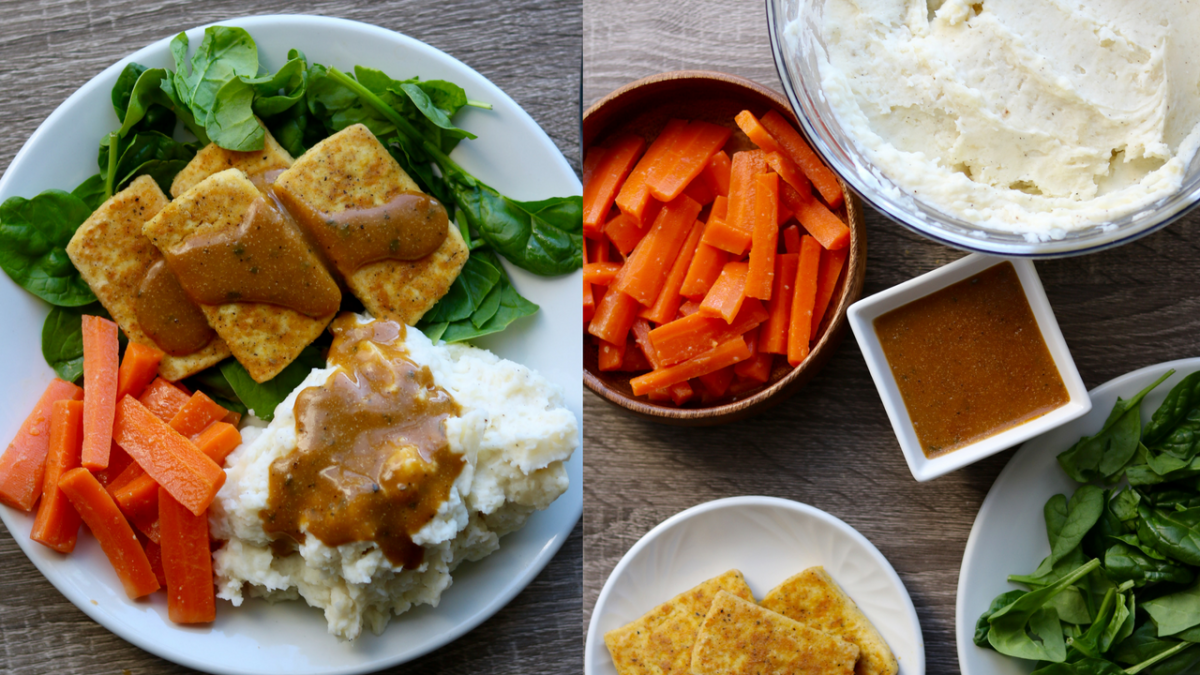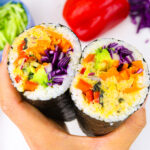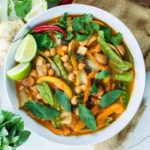Imagine a Thanksgiving feast bursting with vibrant colors and fresh, unexpected flavors – a celebration of autumn’s bounty, completely raw and vegan. Forget the heavy, traditional fare; this year, delight your guests with a breathtaking array of plant-based dishes that are as visually stunning as they are delicious. From creamy cashew-based sauces to vibrant, jewel-toned salads, and decadent raw desserts, this guide unveils the secrets to crafting a Raw Vegan Thanksgiving that will leave a lasting impression. Prepare to embark on a culinary journey that redefines the holiday classic, showcasing the incredible versatility and beauty of raw, plant-based cuisine.
This comprehensive guide will walk you through creating a stunning and unforgettable raw vegan Thanksgiving menu. We’ll explore innovative recipes, offering detailed instructions and vibrant photography to guide you through each step. Learn to source the highest-quality ingredients, master essential preparation techniques, and elevate your presentation to create a feast that’s as pleasing to the eye as it is to the palate. Discover the art of transforming simple, seasonal produce into sophisticated, flavorful dishes that will impress even the most discerning Thanksgiving guest.
Creative Presentation and Serving Suggestions
Transforming a raw vegan Thanksgiving feast into a breathtaking culinary experience hinges on thoughtful presentation. The visual appeal of each dish, the overall table setting, and the careful selection of serving ware all contribute to creating a memorable celebration. By focusing on color, texture, and artful arrangement, you can elevate your raw vegan Thanksgiving to a level of sophisticated elegance.
A Visually Appealing Thanksgiving Table Setting
Imagine a rustic yet refined table, adorned with a crisp white linen tablecloth, subtly textured with a subtle linen weave. The centerpiece is a bountiful arrangement of vibrant fall colors: deep crimson cranberries nestled amongst emerald green kale leaves, punctuated by the golden hues of butternut squash slices and the deep orange of pomegranates. Natural wood chargers form a grounding base for each place setting, topped with simple, elegant white ceramic plates. Delicate, hand-blown glass goblets shimmer with the light, ready to hold sparkling cider or cranberry-infused water. Small, polished wooden bowls hold individual portions of raw vegan cranberry sauce, their rich red color a striking contrast against the natural wood. The overall effect is one of rustic charm and sophisticated simplicity.
Plating Options for a Signature Raw Vegan Thanksgiving Dish: Stuffed Butternut Squash
A raw vegan stuffed butternut squash offers a beautiful canvas for creative plating. Three distinct plating options can enhance the dish’s visual appeal:
Plating Option 1: Rustic Elegance
A halved butternut squash, roasted to a rich golden brown, sits on a bed of vibrant microgreens. The filling, a vibrant mix of finely chopped walnuts, cranberries, and herbs, spills generously from the squash cavity, creating a sense of abundance. A drizzle of tahini dressing adds a creamy, contrasting texture and a touch of visual interest. A sprinkle of toasted pumpkin seeds provides a final textural element and a pop of color.
Plating Option 2: Modern Minimalism
Here, the focus is on clean lines and sophisticated simplicity. A perfectly portioned scoop of the butternut squash filling is carefully placed onto a small, square white plate. The filling’s natural colors and textures are allowed to shine, uncluttered by excessive garnishes. A single, perfectly formed kale leaf is placed beside the filling, adding a touch of greenery and a contrasting texture. A delicate line of pomegranate seeds adds a burst of color and visual intrigue.
Plating Option 3: Layered Abundance
This plating style embraces the abundance of the Thanksgiving feast. Layers of the butternut squash filling, alternating with layers of finely shredded carrots and beets, are artfully arranged in a clear glass bowl, showcasing the vibrant colors and textures of each ingredient. A sprig of fresh rosemary adds a touch of aromatic elegance, while a scattering of chopped pecans provides a final textural contrast.
Enhancing Visual Presentation Through Natural Elements
Natural colors, textures, and garnishes are key to elevating the visual appeal of each dish. The deep orange of butternut squash pairs beautifully with the deep red of cranberries and the vibrant green of kale. Toasted nuts and seeds add textural contrast and visual interest. A drizzle of a vibrant dressing – tahini, avocado cream, or a vibrant cashew-based sauce – can add a touch of visual elegance and a contrasting color. Fresh herbs, such as rosemary, thyme, or parsley, add a touch of freshness and aromatic appeal. Consider using edible flowers, such as pansies or nasturtiums, for a touch of unexpected elegance and color. Remember, thoughtful arrangement and the use of contrasting textures and colors can transform even the simplest raw vegan dish into a visual masterpiece.
Recipe Variations and Customization Options

Raw vegan Thanksgiving recipes offer a vibrant canvas for culinary creativity, easily adaptable to diverse dietary needs and preferences, regional ingredient availability, and individual taste profiles. By understanding the fundamental principles of these recipes, you can confidently tailor them to create a truly personalized and delicious Thanksgiving feast.
Adapting a Raw Vegan Pumpkin Pie Recipe for Various Dietary Needs
Let’s consider a classic raw vegan pumpkin pie as a base recipe. This example demonstrates how to modify it for gluten-free, nut-free, and seed-free diets. The core recipe might use a pecan-date crust and a pumpkin puree filling sweetened with maple syrup and spiced with cinnamon and ginger.
- Gluten-Free Adaptation: The original recipe, if using gluten-containing flour in the crust, can be easily adapted. Simply replace any all-purpose flour with gluten-free all-purpose flour blend. Ensure the blend contains xanthan gum or guar gum to mimic the binding properties of gluten. This will result in a crust that maintains its integrity and texture. A blend of almond flour and coconut flour can also be used successfully.
- Nut-Free Adaptation: For those with nut allergies, sunflower seed butter or pumpkin seeds can replace the pecan butter in the crust. The flavor profile will change subtly, but the texture remains satisfyingly crumbly. For the filling, ensure all nut-based ingredients (such as nut butters or nut milks) are substituted with sunflower seed butter or pumpkin seed butter, or other seed based alternatives.
- Seed-Free Adaptation: This requires a more significant adjustment. The crust could be made with a combination of dehydrated vegetables like sweet potatoes and carrots, blended to a fine consistency and pressed into a pie plate. The filling may need to rely more on fruits for sweetness and creaminess. Dates could be blended into the pumpkin puree to create a thicker, richer texture, and the spices can be adjusted to balance the different flavors.
Utilizing Seasonal Ingredients
The beauty of raw vegan cooking lies in its flexibility. Adjustments to a raw vegan Thanksgiving menu based on regional and seasonal produce are straightforward. For example, if cranberries are abundant in your region, incorporate them into the pie filling, offering a delightful tartness to complement the sweetness of the pumpkin. Similarly, if pomegranates are in season, their vibrant seeds can add visual appeal and a juicy burst of flavor to any raw vegan dessert. Apples, pears, or other seasonal fruits can be incorporated into the crust for a unique flavor profile. Consider using locally sourced vegetables such as butternut squash or sweet potatoes in place of pumpkin for a regional twist.
Adjusting Spice and Sweetness Levels
Personal preferences for sweetness and spice vary greatly. To adjust the sweetness in a raw vegan pumpkin pie, simply modify the amount of maple syrup or dates used in the recipe. Begin by reducing the sweetener by 25%, taste, and then adjust further according to preference. Similarly, the spice level can be adjusted by increasing or decreasing the quantities of cinnamon, ginger, nutmeg, or other spices. Experimentation is key to finding the perfect balance. For those who prefer a less sweet pie, consider increasing the amount of pumpkin puree or adding a touch of unsweetened applesauce to balance the flavors. For a spicier pie, add a pinch of cayenne pepper or increase the amount of ginger for a warm and comforting flavor.
This Thanksgiving, break free from culinary convention and embrace the vibrant world of raw vegan cuisine. The recipes within this guide are more than just dishes; they are opportunities to showcase the beauty and abundance of nature’s harvest. With a little creativity and attention to detail, you can craft a truly unforgettable Thanksgiving experience, one that not only delights the taste buds but also leaves your guests awestruck by the stunning presentation and the surprising depth of flavor achievable with raw, plant-based ingredients. So gather your ingredients, embrace the challenge, and prepare to wow your guests with a Raw Vegan Thanksgiving that redefines the holiday tradition.
Essential FAQs
Can I make these recipes ahead of time?
Many raw vegan dishes are best prepared the day of or a few hours before serving to maintain optimal freshness and texture. However, some components, like the cranberry sauce or cashew cream, can be made ahead.
Are raw vegan dishes filling enough for Thanksgiving?
Absolutely! By incorporating nutrient-rich ingredients like nuts, seeds, and hearty vegetables, raw vegan dishes can be incredibly satisfying and filling. The key is to focus on a balanced menu with a variety of textures and flavors.
What if I don’t have a dehydrator?
While a dehydrator is helpful for some recipes, many raw vegan dishes can be prepared without one. Sun-drying is an alternative, though it takes longer and depends on weather conditions. Some recipes also utilize freezing techniques for certain components.
How do I ensure my raw vegan dishes are safe to eat?
Practice meticulous food hygiene. Wash all produce thoroughly. Use fresh, high-quality ingredients and store them properly. Be mindful of food safety guidelines regarding temperature and handling.


